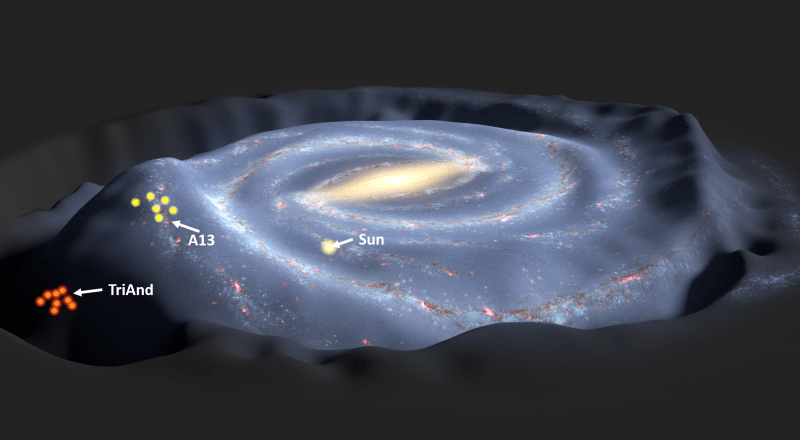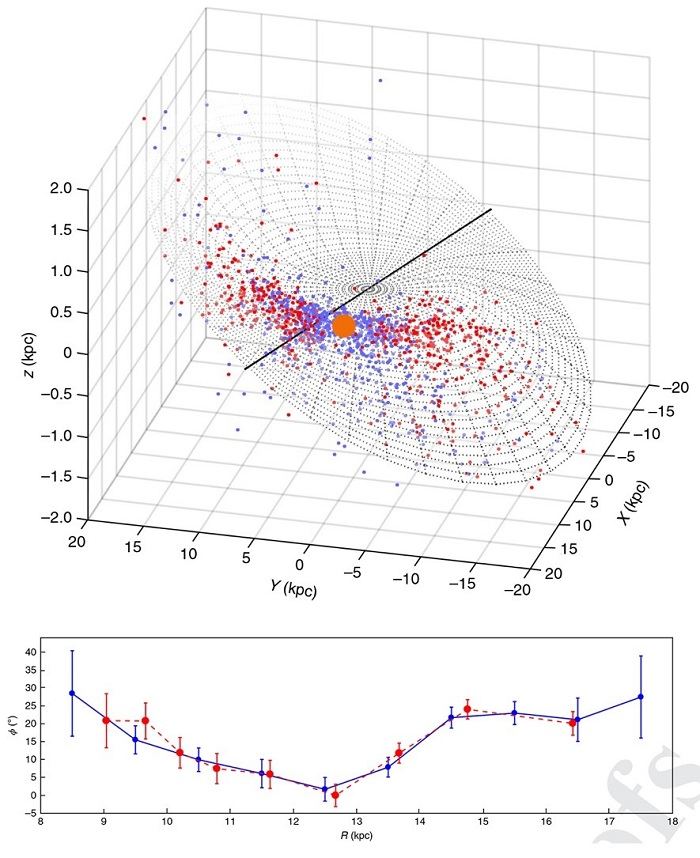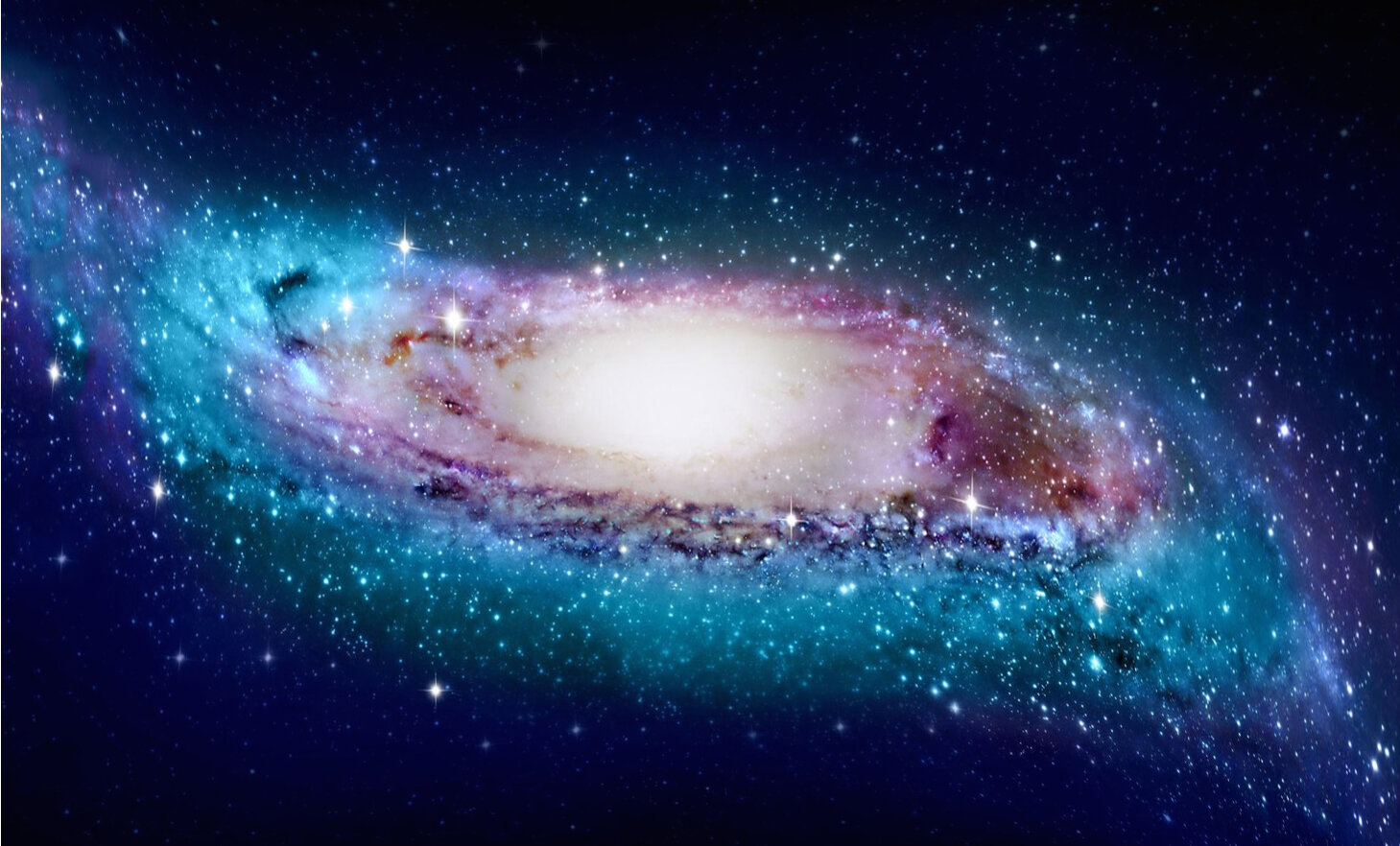For centuries, astronomers have been studying the Milky Way in order to get a better understanding of its size and structure. And while modern instruments have yielded invaluable observations of our galaxy and others (which have allowed astronomers to gain a general picture of what it looks like), a truly accurate model of our galaxy has been elusive.
For example, a recent study by a team of astronomers from National Astronomical Observatories of Chinese Academy of Sciences (NAOC) has shown that the large-scale structure of the Milky Way is quite warped. Based on their findings, it appears that this effect becomes increasingly evident the farther away one ventures from the core.
The study which details their findings recently appeared in the scientific journal Nature, titled “An intuitive 3D map of the Galactic warp’s precession traced by classical Cepheids.” The study was led by Xiaodian Chen of the NAOC’s Key Laboratory for Optical Astronomy, and included members from the Kavli Institute for Astronomy and Astrophysics at Peking University and China West Normal University.

To break it down, galaxies like the Milky Way consists of thin disks of stars that orbit around a central bulge once every few hundred million years. In this bulge, the gravitational force of hundreds of billions of stars and dark matter hold the galaxy’s matter and gas together. However, in the far outer regions of the galaxy, the hydrogen atoms making up most of the gas disk are no longer confined to a thin plane.
As Dr. Chen explained in a recent Kavli Institute press statement:
“It is notoriously difficult to determine distances from the Sun to parts of the Milky Way’s outer gas disk without having a clear idea of what that disk actually looks like. However, we recently published a new catalogue of periodic variable stars known as classical Cepheids, for which distances as accurate as 3 to 5% can be determined.”
Classical Cephieds are a subclass of Cephied Variables, a type of star that is noted for the way it pulsates regularly, varying in both diameter and temperature. This produces changes in brightness that are predictable in terms of period and amplitude and makes them highly useful for measuring galactic and cosmic distances.

Classical Cepheids are a particular type of young yellow bright giants and supergiants that are 4 to 20 times as massive as our Sun and up to 100,000 times as luminous. This implies that they have short lifespans which sometimes last only a few million years before exhausting their fuel. They also experience pulsations that can last days or even a month long, which makes them very reliable for measuring the distances to other galaxies.
As Dr. Shu Wang, of the Kavli Institute for Astronomy and Astrophysics and co-author on the paper, stated:
“Much of our Milky Way is hidden by dust, which makes it difficult to measure the distances to stars. Fortunately, observations at long infrared wavelengths can circumvent this problem.”
For the sake of their study, the team established a 3D Galactic Disk model based on the positions of 1,339 Classical Cephieds. From this, they were able to provide strong evidence that the galactic disk is not in line with the galactic center. In fact, when viewed from above, the Milky Way’s disk would appear S-shaped, with one side curving up and the other curving down.

Said Macquarie University’s Professor Richard de Grijs, a senior co-author on the paper:
“Somewhat to our surprise, we found that in 3D our Cepheid stars and the Milky Way’s gas disk follow each other closely. This offers new insights into the formation of our home galaxy. Perhaps more important, in the Milky Way’s outer regions, we found that the S-like stellar disk is warped in a progressively twisted spiral pattern.”
These findings are reminiscent of what astronomers have observed of a dozen other galaxies, which showed progressively twisted spiral patterns. By combing their results with those observations, the researchers concluded that the Milky Way’s spiral pattern is most likely caused by rotational forcing (aka. “torques”) of the inner disk.
This latest study has provided an updated map of our galaxy’s stellar motions, which would shed light on the origins of the Milky Way. What’s more, it could also inform our understanding of galaxy formation and the evolution of the cosmos.
Further Reading: Kavli Institute for Astronomy and Astrophysics, Nature


Milky Way is warped…what a coincidence so is the DNC.
Politics has no place here, please try not to go there.
Now, now, we encourage making fun of politicians, just not in a slanted or politically-biased way.
“The fabric of spacetime is not merely curved. It is, in fact, completely bent.” -Hitchhiker’s Guide to the Galaxy